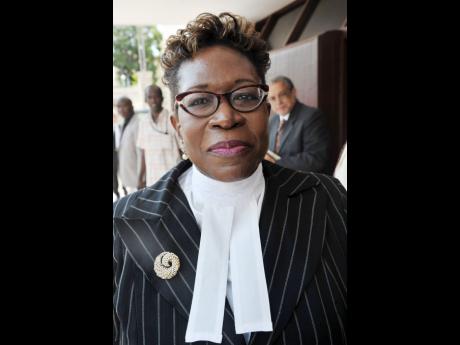A closer look at court cases
Less than 50 per cent of cases in the Home Circuit Court are convictions. During the past five terms of the Home Circuit Court some 373 cases were disposed of. Of these, only 178 (48 per cent) were convictions. Surprisingly, 107 were acquittals and 55 nolle prosequi.
These results are surprising.
Put another way, less than 50 per cent of cases lead to a conviction. Now, this is after the police have arrested a person, fully investigated the matter, asked the Director of Public Prosecutions (DPP) for guidance and charged the person. One should expect that if these processes were diligently carried out that the conviction rate would be much higher. Why take up so much of the court's time for unsuccessful prosecutions? Is this surprisingly low rate of convictions due to poor preparatory and investigative work? Or is it due to witnesses disappearing or similar events?
The above nolle prosequi results also show that the prosecutors/JCF abandon almost one in six cases after charging the person. This is very difficult to understand.
The DPP Paula Llewelyn's department is good at providing information requested. Thank you.
enormous backlog
The Home Circuit Court has an enormous backlog of cases. In September 2015 it had a backlog of almost 500 cases. In the last three terms it had disposed of only some 226 cases. In other words, if it had no new cases, it would be two years before they could deal with the backlog!
Almost 70 per cent of the backlog relates to murder and manslaughter cases. At any point in time there are more than 300 murder cases sitting around awaiting trial in this court.
The DPP is always under pressure to deal with corruption cases brought to her department. In 2013 and 2014 combined, the DPP received 96 files for corruption rulings. The department made decisions in 95 cases. Fifty-four persons were to be charged with corruption. These statistics show that the DPP is turning around the corruption cases brought to her department.
This column does not have the facts to determine whether more than 56 per cent of the cases should lead to criminal prosecution. And, of course, the facts are not available to show how successful the DPP was in gaining convictions of those charged.
The layman conclusions to be drawn are:
1. The courts need to be able to process more cases. Maybe the judges should get rid of apparently long holidays and sit continuously throughout the year.
inadequate investigations
2. It appears that inadequate investigative and preparatory work are done prior to someone being charged. Too high a percentage of people are being acquitted after taking up valuable court time. Who is to blame? The JCF for arresting without due preparation? The JCF for doing inadequate investigations? The DPP for not determining in advance whether the case can be successfully tried?
The whole process reeks of possible incompetence and certainly a massive waste of court time.
There are seven judges of appeal (three ladies) and 38 puisne judges for the Supreme Court (about 17 ladies).
PICA responds to column of October 7
PICA is one of the few government departments that responds to queries. Congratulations to Jennifer McDonald's office.
They confirmed the lack of parity between the cost for citizenship dependent on where you apply. Presumably they will adjust this more frequently than every five years.
They explained the disparity between citizenship applications received and approved each year as due to a backlog. Why should it take two years to process non-descent applications?
This column is based on the audited and in-house accounts and reports of companies and entities owned or influenced by government. CEOs of such entities are invited to send copies of their latest accounts and annual reports to The Gleaner Library. Information about shareholdings and directors will be drawn from the website of the Registrar of Companies. Every effort will be made to publish short and pertinent responses to issues raised sent to editor@gleanerjm.com

